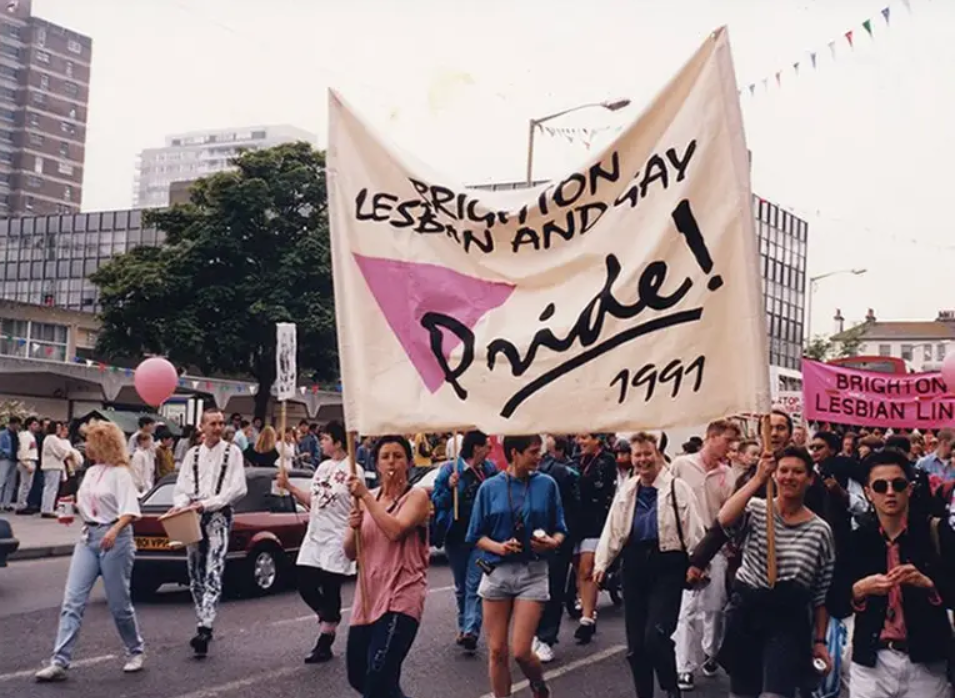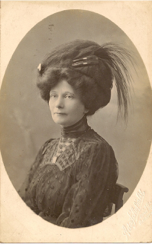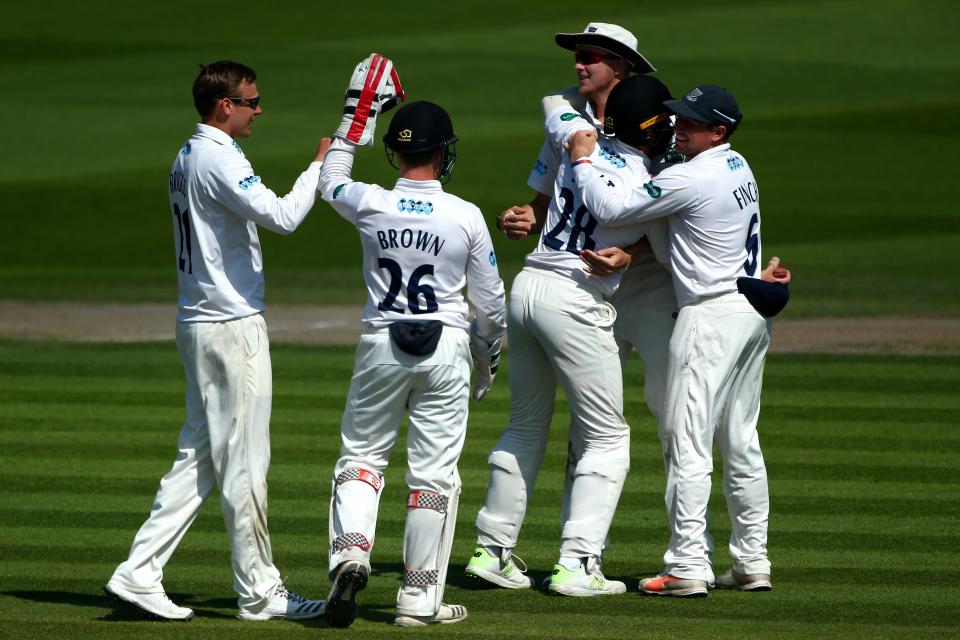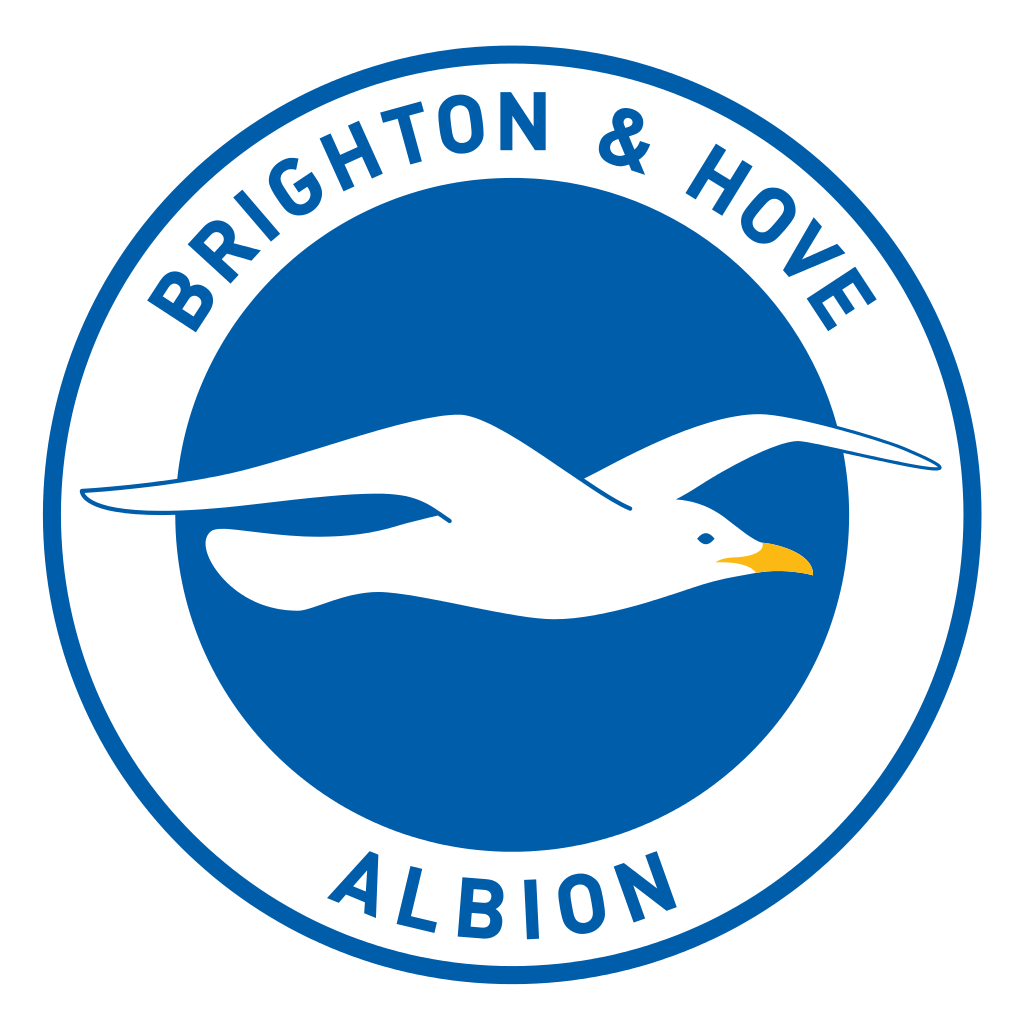I recently visited the Pride exhibition at the Jubilee Library. Despite concerns about modern Pride’s commercialism and divisions regarding sex-based rights and gender ideology, I defy anyone not to be touched by the old black and white photographs of the very first march 50 years ago and the bravery of those involved.
Very few people attended that early march, possibly 20, but many more attended related events. Those were times when, at last, people spoke of being glad to be gay, rejecting the notion that to be homosexual meant a life of repression and misery.
Some present on the day, like the late hugely talented Graham Wilkinson, came to dominate the local campaign for homosexual equality, co-founding the Sussex Aids Helpline in 1985.
Though Graham’s portrait wasn’t on display, it was good to see large contemporary portrait photos of what I assume were early campaigners, now well on in years, facing out across the Square. And yet, I ask, why so few lesbians?
Just three of the ten portraits were of females and the word lesbian appeared just once in the exhibition. This may be understandable given that there seem to have been few women on that first march. Perhaps there weren’t many women in the Sussex Gay Liberation Front which organised it.
However, my recollection of the 1970s and 80s in Brighton is that women were very active in the movement for lesbian and gay rights as well as the women’s movement.
Certainly, by the late 1980s and early 1990s, lesbians took a leading role in the struggle against section 28. They were also heavily involved in the 1991 revival of Pride marches as highly political protests after some 18 years in which they did not take place.
The late 1970s brought huge changes to Brighton. Feminists argued that the personal was political. This was not an early expression of identity politics.
It reflected an increasing awareness among women that low pay and harassment in the workplace, as well as unpaid labour in the family, were not natural things but part of the way society was organised – and could be changed.
Feminists challenged the assumption that women were naturally emotional, irrational or intellectually inferior to men. They rejected sex-role stereotyping and the enforced pregnancy many had experienced.
Women who had experienced sexual and physical violence began to call themselves survivors, not victims, and to demand redress through the courts.
Many of these so-called “second wave” feminists were radical lesbians, who often led debate. Heterosexual women had to move over and most were happy to do so while women keen to involve male partners moved on pretty smartly. Some embraced lesbianism as a political choice, a decision viewed with amused tolerance by established lesbians.
It was at this time that many of our local women’s organisations were set up – the Women’s Centre, Brighton Women’s Aid, the Rape Crisis Centre and later the Incest Crisis Line. All of them were female-only services, often run as collectives and later charities, always by women.
Local women read feminist books, attended consciousness-raising groups and learned self-defence. They campaigned for refuges, equal pay and abortion rights and demanded peace, camping out in the 1980s at Greenham Common – and, for a while, on The Level.
Lesbian separatists set up collective households in Brighton which became informal feminist campaign centres, where straight and lesbian women learned and socialised. There was one such household in St James’s Street, an area which wasn’t then quite as male-focused as it later became.
Lesbians actively supported Gay Switchboard, but also started a local Lesbian Line, so that young women questioning their sexuality could speak freely to other women. This is still needed. Nowadays young lesbians are too often persuaded they’re “really” boys.
As women, lesbians rarely had the financial resources of gay men. There were pubs that welcomed them, but no dedicated clubs. Women’s discos took place in a very few pubs and community centres, like the old Resource Centre, before it was burned down. There lesbian feminist punk bands like Bright Girls (formerly the Devil’s Dykes) played to crowds of women drinking at candle-lit tables.

As time went on, some lesbians moved to fashionable places like Hebden Bridge but a significant number stayed behind and became stalwarts of Brighton and Hove’s voluntary sector.
There were many acts of protest. In 1990 four local lesbians, ably supported by one gay man, carried hand-drawn placards declaring “Lesbian Mothers aren’t Pretending” on to the stage of the International Congress of the Family, held at the Brighton Centre.
This deeply anti-feminist and homophobic organisation had invited Princess Diana as their guest of honour. The “lesbian protest”, staged directly behind Diana, made national news.
Local activist Dani Ahrens played a leading part in that protest and another the following year, when activists, including lesbian historian Linda Pointing, carried a huge banner into the Brighton Council Chamber.
They held it up in front of the mayor, the late and much missed Joe Townsend. Joe refused to order their removal, so there they remained with aching arms and backs, suffering for the cause.
In recent years, our council has embraced a multiplicity of “genders”. It is vital that, in the process, our city does not squander its rich history of struggle for women’s sex-based rights and of lesbian feminist activism.

Women’s history has for centuries been hidden or suppressed. Organisations like the Women’s History Group and the Mary Clarke Statue Appeal exist to rediscover it.
However, it’s depressing to think that, despite the women’s movement, recent fashionable ideologies may serve to make homosexual female relationships invisible once again – and make same-sex attracted young women ashamed to call themselves lesbian.
I look forward to a time when I will see displays in our museums about local lesbian and feminist history – and in exhibition spaces, portrait photographs of, among others, pioneering women such as Dani Ahrens, Linda Pointing, Joan Mortimer, Shirley West, Tash Fairbanks, Melita Dennett, Jill Gardiner and Val Brown.
Those are a few great names. Just for starters.
Jean Calder is a campaigner and journalist. For more of her work, click here.









Another great read from Jean Calder, and thank you for reminding me of names I had forgotten about.
The exhibition at the library documenting the 1973 Pride march in Brighton, and then tracking down some of those people who were on it, is a fascinating idea. And of course it coincides with our 50th anniversary for Brighton and Hove Pride in 2023.
But while we might look back at our history for clues as to who we are now, the danger is we also look back with blinkered eyes, and we only pick out what we want to find.
It’s so important to remember how times change, and in the 1970s the concept of sexism was only just being discussed. Separatism was also a new thing.
The Gay Liberation Front (GLF) was run collectively, and with weekly meetings where everyone was allowed their say, but it’s well-documented now how the London meetings had far more men in attendance, and by 1972 many women speakers were already suggesting the need for a separate women’s caucus.
The GLF also blew itself apart by 1973, despite the good intentions. The GLF manifesto of 1971 laid out some extraordinary ideas – some of which modern readers would find distasteful today – and I’m guessing that some members weren’t sure either, about what they were signing up to.
The huge meetings also became unmanageable and chaotic, and so any unified direction of travel for the movement was soon lost.
The social events organised in London also became huge – at a time when gay bars and clubs were hidden away and very small –and it may be that these GLF dance evenings were more about finding a future or temporary partner than they were about political togetherness.
It’s then arguable that these social events signalled to entrepreneurs that gay bars and discos could be bigger, and the commercial side of the gay scene then blossomed in the following years and through the 1980s – whilst again mostly catering for gay men. Some gay bars and clubs, including one or two in Brighton, actually excluded women, especially if they had short hair.
All political and social movements have some inconvenient truths. My own first Pride march was in London, in 1975, where we marched from Embankment through Chelsea and Earl’s Court to Shepherd’s Bush Green.
As we marched past the infamous gay pub, The Colherne, we were shouted at and spat upon, not by straight people but by the gay men having a Saturday pint.
“We don’t need you,” they shouted, “we’re legal now…”
This was a generation of gay men who had lived through the secrecy of being gay when it was illegal, and they had survived the blackmail years. The 1967 sexual offences act, which finally made it legal for men to be gay, albeit in limited circumstances, was enough for them. And they felt we marchers were just rocking the political boat unnecessarily.
Note that it then took us another 30 years before we were allowed a civil partnership, and that the equal age of consent for gay men was only achieved in 2001. The fight for fairness, and for equal treatment, never really ends.
All organisations can make mistakes, some more catastrophic than others. I’d give today’s Stonewall 9.5/10 for taking a wrong turn. Anyway, you say the GLF manifesto put forward ideas ‘ some of which modern readers would find distasteful today’. Could you be specific? As you say it’s best not to look back with blinkered eyes.
Mikey Mike,
Thanks for commenting.
I wasn’t complaining or criticising – just pointing out that this early campaigning group had some ideas we might now question.
For example, the GLF weren’t big on the idea of monogamy or on life partnerships, because they considered that to be copying heteronormative behaviour. For sure, we still talk about issues of monogamy today, but a lot of people like the idea of civil partnerships or gay marriage.
In the 1970s the age of consent for gay men was then 21, and so some discussions about this went so far as to suggest there shouldn’t be an age of consent for sexual activity – perhaps again following the ‘free love’ view of the 1960s hippy generation. As a 17 or 18 year old at that time, the age of consent of 21 seemed ridiculous to me and just led to feelings of being an outsider, questioning every other law.
And for many it was only later that we realised that equal treatment under the law is the obvious answer. Gay men had to wait until 2001 to get that equality.
Note that in contrast to the GLF, the Stonewall group was founded to work within the system, as a parliamentary lobbying group, and with the basic aim of equality for all. We might argue now that the GLF revelled in being outsiders and ‘different’, whereas Stonewall says we humans are all the same, with similar needs in the eyes of the law.
The GLF manifesto, first published in 1971, is still there for all to read online, but it was revised several times, so there are different versions.
I’ll try and post a link to the later, 1978 version, But I’m not sure this site allows links.
https://sourcebooks.fordham.edu/pwh/glf-london.asp
Thanks for your reply. In truth my fear was around ideas around giving children sexual consent. I’ve vague memories that PIE did have links with various gay organisaitions in the mid- to late-seventies but not sure to what extent. I just think that organisations can come to terrible conclusions for any number of reasons and no organisation should be given a free pass because we see them as the good guys.
In relation to Stonewall, Nancy Kelley (who I think was still CEO at the time) said in relation to lesbians who didn’t want to have relations with men who identified as women should ‘examine their prejudices’. (Presumably she meant that gay men who wouldn’t sleep with women who identified as men should ‘examine their prejudices’ too).
This isn’t a gay-specific thing, obviously. From the Catholic Church to Oxfam, organisations set up witht he best intentions can be subtly, and not so subtly, corrupted.
Clare B Dimyon MBE – 1st honour in British history explicitly for the human rights (& responsibilities) of “lesbian, gay, bisexual & transgender” people 2010. Rainbow flags at British embassies across central & eastern Europe…with rainbow flags welcomed across Ukraine in 2012…Kyiv, Kharkiv, Kherson, Dnipro & Donetsk. Donetsk Pride 2012…one gay man & his mother got to Ukraine in the nick of time. For service not celebrity.
Not sure why Ms Calder and her husband suddenly feel they are qualified to speak on behalf of LGBTQ people…
i’m getting disturbed by this continual forcing of ‘gay rights’ down our throats to choking point.
i’ve just thrown up
You need to work on your gag reflex lovely